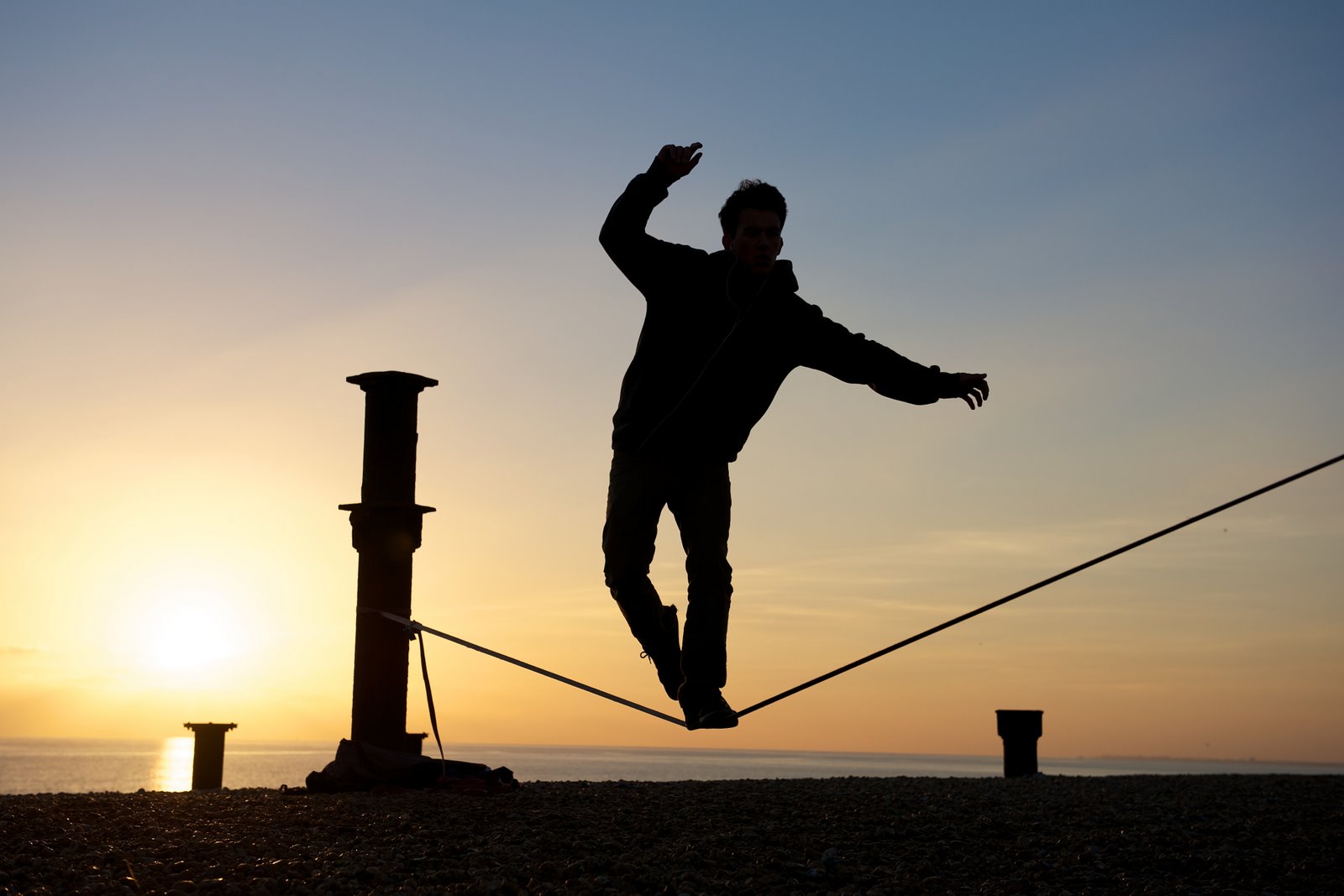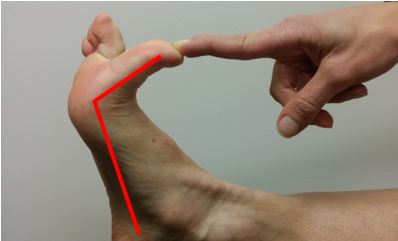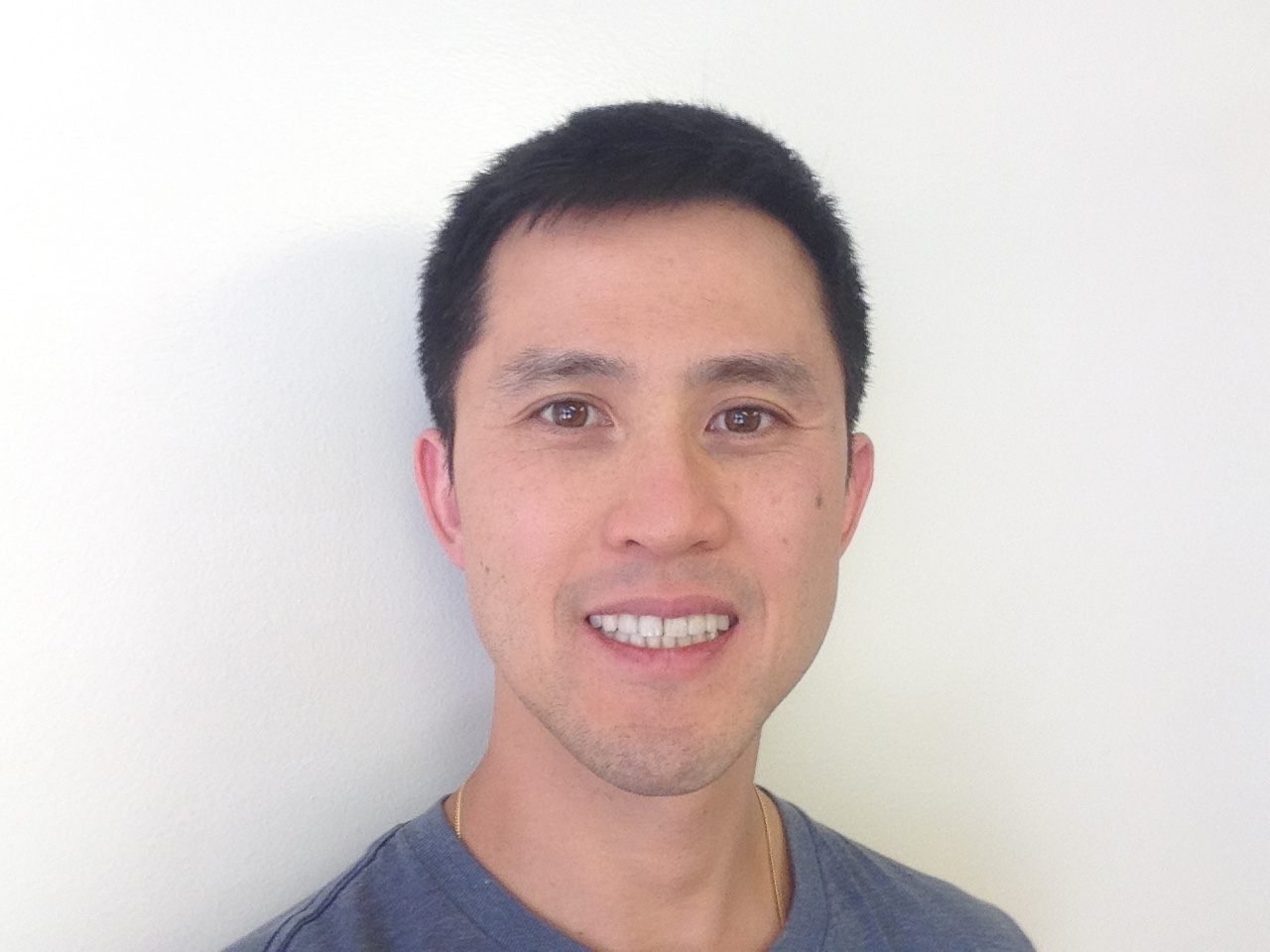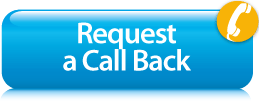
Finding the right balance in life is crucial for happiness in life. The definition of happiness is different for everyone. This cannot be any more true for the care of neck and head pain. In “Our Mighty Duck…Quack! Quack! Quack! (How to Manage Neck Pain)” I explained how this balance is important in the role of the neck, metaphorically and literally. Our ability to stay upright is important to not add any more stress to our neck’s role in connecting our senses to our environment. If you are interested in direct self-treatment strategies to your neck, read “Hidden Reasons for Nagging Neck Pain Part 1 and Part 2“.
It is common to have tension in our neck extensors like the trapezius (upper) fibers and levator scapulae muscles. I linked the trigger point chart to these muscles, showing where the “knots” can be and the referral pain pattern. These are the same movement pattern as our glutes. If one has a weak buttock (gluteus maximus and medius muscle) propulsion or power capability, the neck (extensors) muscles can be overworked. Our big toe flexibility plays a huge role allowing and communicating our glutes to fire properly, thus the big toe is important in neck care.
Many studies have shown direct relief of pain and pressure when our middle back has good range of motion. The good news is that our mid back is an easy region to provide self-care too. Our middle back is where our diaphragm is located. The diaphragm and utilizing breathing strategies to become a diaphragmatic breather is important in relieving pain and tension up and down your spine. Our diaphragm is part of our “core” and practicing efficient breathing can have a profound effect in displaying raw power and athletic movement. When one is physically and emotionally overstressed, it is easy to shift to becoming a neck breather. This compresses on our neck joints and does not allow our neck muscles to relax. You can get massage all you want, but breathing happens every second of every day.
Inner Ear Test
Stand on level ground. Turn your head side to side at a rhythmic pace 5 times. Repeat with the head looking up and down now for 5 counts. Lastly, repeat with head tipped side to side for 5 counts.
Follow up this routine but stand on a sofa cushion or a thick padding like 3-4 pillows. Perform the same three neck movements. This two-step assessment is accurate at picking up anyone with inner ear issues, lower brain issues, or “unhealed” concussion.
Do not panic if this test is hard for you. Many people can use this same test as a treatment protocol in where they train their body to adapt to this difficult routine. Spend 2-3 minutes before any exercise, competition, lifting, or to start a new habit in where you are training your body to work SMART and not HARDER! This is overlooked by many clinicians and can have a powerful effect on dampening any chronic tight muscle.
It is wise to seek appropriate medical care by a trained vestibular physical therapist to assess the health of your inner ear (vestibular) system and get a prescription for appropriate treatment.
Self Treatment Exercises
Diaphragm Clock: Imagine your stomach as a clock with the 12 o’clock hand facing your nose and the 6 o’clock hand facing your navel. Inhale deeply into the 12 o’clock region (bottom part of chest bone). You may place your palm there so you can feel and assess how much motion is happening there. Repeat this step going from clockwise from 1 to 12 o’clock. There tend to be pockets within your abdominal region that will be difficult to breathe in. Repeat at the spots where it is difficult a few times more. NOW, Start at 10 o’clock and inhale deeply. Hold your breath and shift the “air bubble” from 10 to 11, then 11 to 12….1….and 2. I like to say this is more like “blinking your ribs or pelvis headlights”. It should be easy to round the clock as you breathe rhythmically from 1 to 12 o’clock.
Add you outside left and right lower back to this program. This is a powerful exercise that I use frequently to help many patients with acute and chronic pain.
Bridge: Lay on your back and lift up your pelvis as high as you can. I like to add a shoulder stretch by having one grab each elbow (forearm if your arm is tight) under your middle back. Breath deeply into your pelvic region. Hold for 60 seconds. You should never feel pain or discomfort in your low back or knees.
For more glute exercises and progression, read “How to Undo Glute Amnesia (Gluteus Maximus Muscle) or Just Get a Rear LIft“.
1/2 stance: Grab a step stool. Feet facing straight ahead with one leg on the stool. Arms overhead, pressing up towards the ceiling. If you want to get a better effect, add a dowel/stick to your overhead press. If you have a partner standing by, close your eyes. Hold for 30 seconds.
Mid Back “Sprinkler” Twist Stretch: get on all fours (hands and knees). Place one hand behind your neck. Press your bottom arm into the table/floor and twist your mid back. Take a nice breath in and out. Repeat 5 reps. Switch and repeat for 5 reps. Now, rest your hand on your low back and repeat this trunk twist motion for 5 reps. Switch and repeat.
 Big Toe Extension Test and stretch: Pull your big toe back. It should be at a 90-degree angle. For a treatment effect, pull your toe away from your foot (distraction) then bend it forward and backward. Hold for 2-3 seconds and repeat 10 times. Follow with 2 rounds of 30 seconds hold.
Big Toe Extension Test and stretch: Pull your big toe back. It should be at a 90-degree angle. For a treatment effect, pull your toe away from your foot (distraction) then bend it forward and backward. Hold for 2-3 seconds and repeat 10 times. Follow with 2 rounds of 30 seconds hold.
Push pull hold with stick: grab a long stick. Stand upright and hold the stick horizontally. Go to a doorway or wall. Press the stick into the wall as one arm push while the other pulls on the stick. Grip tight, emphasizing the pinky side of your grip. You should feel your abdominal muscles working ONLY. If so, hold for 60 seconds and switch sides. If NOT, back off on the intensity until you feel it in your abdominals only, hold 3 minutes.
I hope you enjoy this article in regards to a comprehensive care for your neck. If you need more help or looking for a 1-on-1 consultation, feel free to click on the blue button below to schedule a complimentary 15 minutes Phone Chat with Dr Ngo for your neck pain relief or second opinion on a neck concern like having neck pain from sleeping wrong.
One Love,
Dr Danh Ngo
Spine and Sports Injury Specialist

